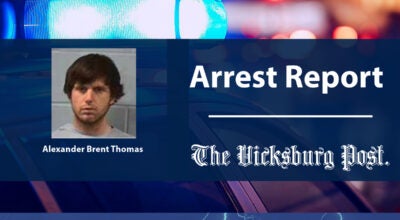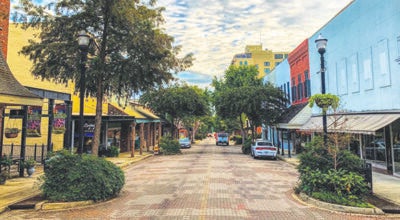River bank not to blame in bridge shift, Corps says
Published 12:00 am Thursday, February 15, 2001
[02/15/01] A careful study taking a year has eliminated bank movement as the cause of a shifting support of the U.S. 80 Mississippi Bridge.
The county commission that oversees maintenance and repair of the 70-year-old structure hired the U.S. Army Corps of Engineers to monitor the movement of the east bank and to make a recommendation. Engineers suspected the river bank was shifting and causing the pier to move.
“That appears not to be the cause,” Jack Shortess, engineer from the Baton Rouge firm HNTB, told members of the Vicksburg Bridge Commission Wednesday. “We need to start looking at other reasons for the movement.”
During its annual inspection of the bridge last month, the Corps of Engineers determined the bank had not moved during the previous 11 months. At the same time, the inspection revealed that Pier 2, named so because it is the second pier from the Mississippi bank, had moved an additional 3/4 inch in the past year.
“We want to get to the root of the problem,” commission chairman Winky Freeman said.
Freeman said the commission would continue to hold off on repairs to the bridge roadbed as recommended by the engineers. Trains have never stopped using the span, the only rail crossing between Memphis and Baton Rouge, but cars have not been allowed on the bridge since September 1998.
Shortess also said he had hoped that shift in the bank was causing problems with a railroad support that has been requiring regular repairs for the past five years. Since the bridge opened in 1930, Bent ER, a railroad support close to Pier 2, has sunk nearly 13 inches.
The support does hold up the weight of the railroad track alongside the roadbed of the bridge. Bent ER does not support the roadbed, but is on the same bank that engineers had believed was moving.
“Load factor is definitely a possibility,” Shortess said.
The number of trains crossing the river in Vicksburg has increased to about 16 per day since the North American Free Trade Act was enacted in 1997.
The bridge will also be used to cross the river by Amtrak trains on a proposed new route from Meridian to Dallas. Two trains per day are expected to pass through Vicksburg along the route.
Shortess said HNTB will bring in bridge engineers with different specialties to investigate the problem further. He said the firm will conduct an underwater inspection and a hydrographic survey.
Separately, a representative from the National Park Service in Atlanta presented commission members with information about the department’s River and Trails Program. Erwin Dunham said that given the problems with reopening the bridge, the park service would like to see the bridge transformed into a park.
“We would like to assist this community in seeing this project through with something that would be pleasing to everyone,” Dunham said.
The option of transforming the bridge into a park had been the subject of months of debate in 1999. In response, Warren County supervisors voted to place a non-binding referendum on the November 1999 ballot to get the public’s opinion of what the fate of the bridge should be.
On that ballot, 59.3 percent of those casting ballots said reopen the bridge to light vehicular traffic. About half as many voted in favor of a proposal to convert the bridge into a pedestrian park with a bike trail.
After the election, supervisors voted 4-1 to direct the Vicksburg Bridge Commission to reopen the bridge.
“You may have been directed to do it, but you can’t,” said Ray Duncan.
Duncan was one of the spokesmen for the group called The Friends of the Bridge, who supported converting the bridge into a pedestrian and bicycle park using a $1.7 million federal grant. He maintains that the 18-foot width of the roadbed is too narrow for modern traffic needs.
Neel-Schaffer Engineers Inc. of Jackson conducted a traffic study on the bridge last year to address that concern. Their report recommended that the bridge not be opened for two-way traffic because of the roadway’s narrow width.
The engineering firm also said they would not recommend one-way traffic on the bridge because they said it would be of little benefit.
“There may be other options in the future if we cannot open it to one-way traffic,” Freeman said.
HNTB has estimated it would cost $4 million to repair the pier and a railroad support that have been sinking since the bridge was built. Separately, the cost to repair the roadway has been estimated at $2.8 million over a five-year period.
Kansas City Southern Railway holds a 999-year lease for use of the tracks and pays a per-car toll for use of the bridge. Those fees are used for repair and maintenance of the bridge.
Any repairs to the bridge would have to come from the commission’s reserves, about $5.5 million.
In other matters the commission:
Tabled a request from River Region Health System to use the bridge for the Over the River Run scheduled for Sept. 8 until after the Warren County Board of Supervisors approves a new special events policy for the bridge.
Voted to retain HNTB as the engineering firm for the bridge.
“I just didn’t want to let them get complacent,” said Raymond Ray, former chairman of the commission who suggested last month that the commission consider using a local engineering firm.
Closed the meeting to discuss renewal of lease rates with KCS. The lease is public record. Negotiations are private.
The Vicksburg Bridge Commission will meet again at 10:30 a.m., March 14 at the Warren County courthouse.





